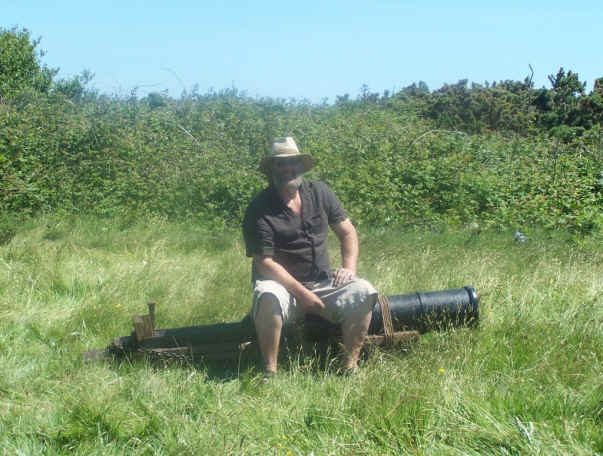| Artillery | |
|
For most people when they hear the word ‘Artillery’ they think of Cannon, however the real birth of Artillery started in 399 BC, with the Ancient Greeks inventing the Gastrophete, a very large crossbow. At this time the Chinese were also inventing, and created the traction trebuchet. Both these siege engines developed technologically and grew in size. The Greek invention became the torsion catapults that the Romans later used and the Chinese trebuchet was ultimately developed by the Europeans, becoming the massive counter weight machine that struck terror into the heart of many a castle. In 1326 we have the first picture of a Cannon, depicted by Walter Milmete in manuscript for the Prince of Wales. This Cannon looked rather like a large flower vase and had a great arrow protruding from its muzzle. Its colour implied that it was made of Bronze, an alloy of Copper and Tin, the same metal used to make bells. This is significant in that the skill and understanding required to cast a bell is immense, therefore having this knowledge made these craftsmen the perfect artisans to take up the challenge of casting cannons. Unfortunately the high cost of Bronze at this time made cannon prohibitively expensive and a cheaper way of making large numbers of guns needed to be invented. |

|
| Colin pictured sitting upon one of his cannon | |
|
This was achieved by unknown metal workers who took their inspiration from timber barrels, making their guns using the principles of hoop and stave. Timber barrels are made with long shaped wood staves that are held in place by iron rings, these new cannon were similarly constructed, however they used long wrought iron staves, rather than wood, although the staves were still held in place using wrought iron hoops. The hoops were fitted hot and gradually cooled, shrinking and holding the staves tightly. The age of the Bombard was now dawning. In the first half of the 14th Century there were small Cannon firing tiny 7-ounce projectiles, this gradually changed and by the latter part of the Century these guns had become terrifying monsters which could hurl a gun stone weighing 200 Pounds or more. Wrought Iron Guns were with us through the 15th, 16th & into the 17th Centuries, however, as Gunpowder technology improved and the propellant became more powerful, these wrought iron composite guns could not withstand the shock of the new powders. By this time Bronze casting had developed and the making of Bronze Cannon that could fire smaller cast-iron shot had taken over. These cannon could also be mounted on wheels and so Artillery had now became mobile. Apart from exterior ornamentation very little had changed in the making of cannon until the 18th Century. A Swiss gentleman named Mauritz started to bore the central hole out of the solid barrel, as an alternative to casting guns with a wood and clay 'former' placed in the centre of the mould to make the bore. The principle of casting with a wood and clay 'former' had worked in the past, although as the mould was being filled with the molten bronze it would sometimes move. This resulted in an untrue bore that could result in the cannon being unsafe. The new ‘Mauritz’ method of drilling the bore after the gun had been cast, made for a safer and more accurate Cannon. The next step in Cannon construction was to increase production, this required a material that was cheaper than Bronze and so the gun casters turned to casting with iron. This metal could be heated to its molten state and poured into moulds in the same way as bronze, although it required a higher temperature. But cast iron is brittle in comparison to Bronze and changes to the shape of the guns had to be made. The thickness of the metal around the bore had to be increased which obviously added to the weight of the gun. This was acceptable however, as the cost of materials was much less and cast-iron ordnance was born.
Although cast-iron now dominated gun construction, Bronze was still in use for field guns that needed to be lighter and mobile.
In the 19th Century we start to see the use of wrought iron again, as a re-enforcement around the outside of
the gun barrel.
Now, I can talk about Cannon for ages - all about how breechloaders came and went
- came and went again - and how we finally ended up with modern breech loading artillery, but that would take a
book!!! Perhaps I should start on one? However, if you would like to know more,
I urge you to come and chat with me at an event or Firepower show. I am more than happy to
talk about guns! |
|